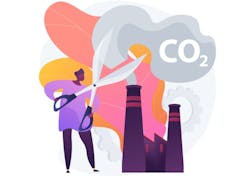California bills aim to help communities create resilience, cut emissions with microgrids and DERs
With big leaps in the use of diesel generators in California, The Climate Center and Senator Bill Dodd, D-Napa, want to take action with microgrids and distributed energy resources (DERs) so they are doubling down this year on winning passage of the Community Energy Resilience Act, SB 833.
Use of backup generators has increased in the San Francisco Bay Area by 34% over the last three years in response to public safety power shutoffs (PSPS) and outages, according to research from the consulting group M. Cubed. The backup generators equate to 15% of the state’s total electric capacity and 90% of them use carbon-intensive diesel fuel.
M.Cubed estimated that the health costs associated with the increase in emissions in the Bay Area and South Coast are $31.8 million and $103.9 million annually.
The Community Energy Resilience Act calls for a program that would help cities and local governments develop energy resilience plans using clean distributed energy resources. That would reduce the demand for fossil-fueled generators during power outages, said Kurt Johnson, community energy resilience director for The Climate Center, which aims to reduce climate pollution.
Last year, the same bill failed to pass the California Legislature. The Climate Center hopes that the increased incidence of climate-change induced floods, wildfires and natural disasters will boost policymakers’ focus on resilience, helping move the bill forward this year, said Johnson.
“The premise of SB 833 is you need to start by having a clear vision and a plan for how DER is built out in a community, which can then lead to decisions later about how to finance, build, own and operate,” said Johnson. A number of federal, state, local and private financing options are available, but first communities need a plan that has local political support, he said.
Solar bill would speed permitting
Meanwhile, Sen. Scott Wiener, D-San Francisco, introduced California SB 379, the Solar Access Act, which could aid the effort to create community energy resilience by speeding the permitting of solar and storage. The bill aims to provide instant, online solar and storage permitting in counties with over 150,000 residents. The goal is to decrease approval times for residential solar and solar-plus-storage systems, slash permitting costs for local governments and homeowners, and help California meet its greenhouse gas emission reduction goal.
“Solar energy is critical to California, and rooftop solar is a key part of that,” Weiner told Microgrid Knowledge in an interview. “The hard costs are going down. But the soft costs are not going down.”
Sometimes homeowners install solar or solar and storage, and it takes weeks and months to get a permit from the local government to turn the systems on, said Weiner. The Solar Access Act calls for local governments to use standardization tools — including the National Renewable Energy Laboratory’s free-to-use SolarAPP+, a web-based portal that streamlines and automates permit reviews. The app can be incorporated into existing local government permitting software. Los Angeles, San Jose and Stockton have already adopted automated online permitting, Weiner noted. Pleasant Hill has cut its average permit review time to zero days — resulting in same-day approval — since adopting SolarAPP+, said Weiner.
“That [interconnection within a certain period of time] would be a bruising fight in the legislature, but I would support it.” — Sen. Scott Weiner
Weiner noted that speeding up the utility interconnection process is another challenge for the solar-plus-storage industry. “This bill doesn’t deal with that, but the problem is very real,” Weiner said.
The California Legislature could require utilities to grant interconnection within a certain period of time, he said. “That would be a bruising fight in the legislature, but I would support it,” said Weiner.
Resilience Act hones in on areas of need
Like the Solar Access Act, the Community Energy Resilience Act aims to provide support that would move DERs along.
The Community Energy Resilience Act calls for the California Energy Commission to develop technical assistance and grant programs to support resilience efforts, according to a fact sheet from Dodd and The Climate Center about the bill.
The local governments that receive planning grants would partner with utilities to identify areas most likely to experience outages and develop plans to ensure reliability at the critical facilities identified in the plan.
SB 833 complements a California Public Utilities Commission decision issued in June 2020 requiring investor-owned utilities to share information with local governments and engage with them in energy resilience planning.
“Utilities could work alongside local governments to identify where to site DERs in a way that is optimized from a communitywide perspective, as opposed to each individual property owner thinking only about what might be possible within their existing property line,” said The Climate Center’s Johnson.
About 1 million California homes and businesses, including 2,000 schools, have solar PV and would only need to add storage to boost resilience in their communities, according to The Climate Center.
The resilience bill also dovetails with the governor’s Zero Emissions Vehicle Executive Order, which aims to boost resilience using mobile electric vehicle (EV) storage as a grid asset.
“Thinking more broadly, SB 833 can be thought of as the next logical step in the evolution of California energy policy,” said Johnson. Rather than building on a 100-year-old grid architecture that has contributed to wildfires and power shutoffs, the state can create a more decentralized and integrated power grid, with thousands of local electricity systems — including single microgrids and community microgrids — that can island from the main grid, he added.
“The only truly reliable electricity source is one that’s adjacent to the load. It has to be local, period,” said Johnson.
3.2 million reasons for microgrids
Siting local loads has become more and more important in recent years. Between 2013-2020, California utilities reported that they cut power to more than 3.2 million customers, according to PSE Healthy Energy, a nonprofit research institute. The report notes that these aren’t unique customers; some had their power shut off more than once. The average PSPS duration was about two days, although some lasted for up to six days.
Installing DERs and microgrids involves gaining permitting approvals for clean energy generation, storage and EV charging infrastructure. Many local governments, especially those in lower income communities, don’t have the staff and budget for energy resilience planning, said Johnson.
Without efforts like SB 379 and SB 833, low-income residents are likely to suffer from pollution and outages.
“Absent state policy leadership, only the wealthiest individuals, businesses and communities will achieve clean energy resilience, leaving poor communities most exposed to diesel pollution when they’re in the dark,” said Johnson.
Track news about microgrid legislation. Subscribe to the free Microgrid Knowledge Newsletter.








